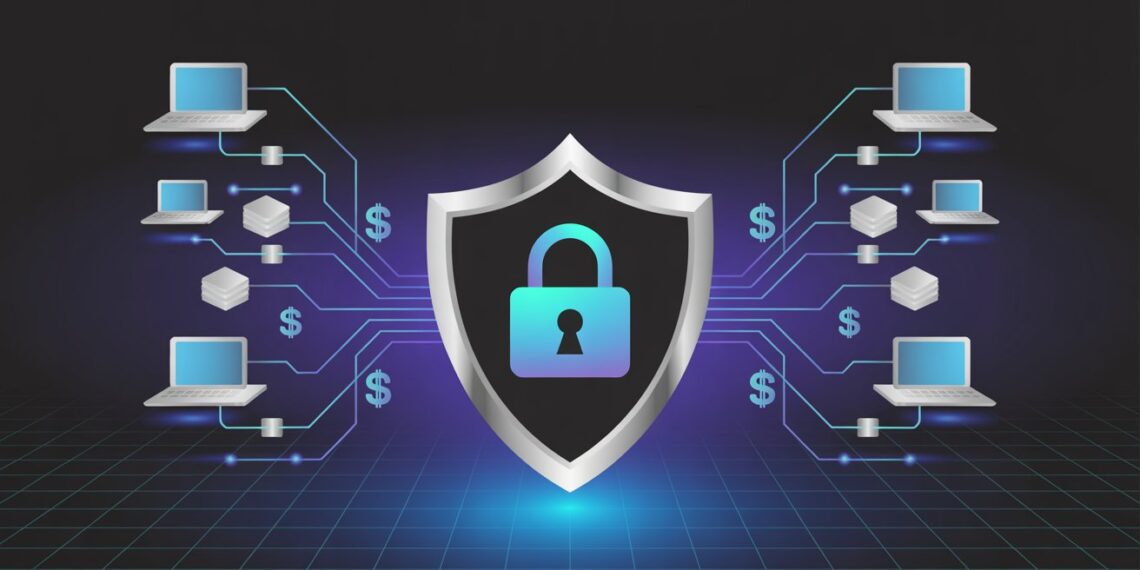In today’s digital-first economy, information is power—and data is among the most valuable assets any organization holds. From startups processing online payments to multinational corporations safeguarding millions of customer records, every business depends on secure, uninterrupted digital operations. Yet with this reliance comes increased vulnerability. Cyberattacks such as ransomware, phishing scams, data breaches, and denial-of-service attacks are not just nuisances; they can halt operations, drain finances, and permanently damage brand reputation.
To combat these risks, many organizations turn to a crucial protective measure: cyber insurance. Still, the term often raises questions. What does it cover? How much does it cost? Is it really worth the investment, or can companies simply rely on strong cybersecurity tools? In this comprehensive guide, we’ll break down Cyber Insurance Explained: Coverage & Costs, covering not only the basics but also deeper insights into benefits, limitations, costs, and best practices for getting the most out of your policy. Whether you are a business leader, IT professional, or small business owner, this guide will give you the knowledge to make informed decisions.
What Is Cyber Insurance?
Cyber insurance, sometimes called cyber liability insurance or cyber risk insurance, is a specialized policy that protects businesses and individuals from financial losses caused by cyberattacks or data breaches. Unlike traditional insurance, which typically covers physical damages like fire, theft, or natural disasters, cyber insurance addresses the consequences of digital risks.
At its core, cyber insurance provides a financial safety net in situations where cyber incidents could otherwise devastate a business. This protection includes costs associated with:
- Data recovery after accidental loss or malicious deletion
- Business interruption when cyber events disrupt operations
- Legal fees for defending against lawsuits or compliance violations
- Customer notifications and credit monitoring after a data breach
- Extortion or ransom demands from cybercriminals
In an era where cybercrime is evolving daily, this form of insurance is becoming an essential line of defense.
Why Cyber Insurance Matters
The Rising Tide of Cyber Threats
Global statistics paint a sobering picture: the cost of cybercrime is projected to exceed $10 trillion annually within the next few years. Hackers are no longer just targeting Fortune 500 companies; small and medium-sized businesses (SMBs) are increasingly in the crosshairs. Criminals know that SMBs often lack the extensive cybersecurity budgets of larger corporations, making them easier prey. A single breach can cost a small company tens or even hundreds of thousands of dollars, potentially forcing closure.
Legal and Regulatory Pressures
Governments worldwide are implementing stringent data protection laws, such as the European Union’s General Data Protection Regulation (GDPR) and the California Consumer Privacy Act (CCPA). These laws require businesses to safeguard personal data and promptly disclose breaches. Failing to comply can result in massive fines, sometimes reaching millions of dollars. Cyber insurance can help businesses handle these expenses and maintain compliance.
Financial Protection for the Unexpected
Cyberattacks don’t just cause reputational damage—they directly impact the bottom line. The financial blow includes costs for IT forensics, lost productivity, ransom payments, regulatory fines, and customer compensation. Cyber insurance helps ensure that companies don’t have to shoulder these expenses alone, making recovery faster and more feasible.
Key Coverage Areas of Cyber Insurance
Cyber insurance policies differ depending on the insurer and policy type, but most include two primary categories: first-party coverage and third-party coverage.
First-Party Coverage
This type of coverage addresses direct costs the policyholder incurs from a cyber incident:
- Data recovery and restoration: Recovering or recreating lost, stolen, or damaged digital assets such as customer records or proprietary data.
- Business interruption: Compensation for lost income and operating expenses during downtime caused by a cyberattack.
- Cyber extortion: Covering ransom payments and costs of negotiating with cybercriminals.
- Customer notification expenses: Required by law in many jurisdictions after a data breach, these costs include notifying affected individuals and offering credit monitoring.
- Crisis management and public relations support: Costs for professionals to manage media fallout and repair brand reputation.
Third-Party Coverage
This type of coverage protects against liabilities owed to others:
- Legal defense and settlement fees: Covering lawsuits from affected customers, vendors, or partners.
- Regulatory fines and penalties: Helping to cover the cost of fines levied for data privacy law violations.
- Liability claims: Addressing claims that your company’s security practices (or lack thereof) caused harm to others.
What Cyber Insurance Does Not Cover
As with all insurance products, cyber insurance comes with exclusions. Businesses must understand these limitations to avoid surprises during a claim. Common exclusions include:
- Insider fraud or intentional acts: If employees commit cybercrimes, many policies won’t cover damages.
- Pre-existing incidents: Events that occurred before the policy start date.
- Negligence in cybersecurity: Failing to implement basic protections, such as antivirus software, may void coverage.
- Reputation damage beyond PR costs: While PR efforts are covered, long-term loss of customers or investor confidence may not be.
- State-sponsored attacks: Certain policies exclude incidents attributed to nation-states, classifying them as acts of war or terrorism.
How Much Does Cyber Insurance Cost?
The price of cyber insurance varies widely, influenced by multiple factors:
Business Size and Industry
- Small businesses with limited data exposure may pay between $1,000 and $7,500 per year.
- Large enterprises with complex operations, especially in sectors like finance, healthcare, or e-commerce, may face annual premiums of hundreds of thousands.
Cybersecurity Practices
Businesses with advanced security protocols—multi-factor authentication, regular employee training, intrusion detection systems—can secure lower premiums. Companies with weak defenses or outdated technology often face higher costs.
Coverage Limits and Deductibles
- Higher coverage limits increase premiums but provide more protection.
- Larger deductibles can reduce premiums but increase the company’s financial responsibility during claims.
Claims History
A business with prior cyber incidents or claims will likely pay more, as insurers view it as a higher risk.
Benefits of Having Cyber Insurance
- Financial Security – Prevents financial devastation from breaches or attacks.
- Regulatory Compliance – Ensures legal obligations like data breach notifications are met.
- Business Continuity – Helps reduce downtime and speed up recovery.
- Customer Trust and Reputation – Demonstrates a proactive approach to risk management.
- Added Risk Management Support – Many insurers offer ongoing cybersecurity training, audits, and support.
Choosing the Right Cyber Insurance Policy
When choosing a cyber insurance policy, consider the following:
Step 1: Assess Risks
Evaluate your business’s digital footprint. What sensitive data do you collect, store, or transmit? Which systems are most vulnerable?
Step 2: Compare Coverage
Read the fine print. Ensure the policy covers areas most relevant to your business operations and industry.
Step 3: Consult Experts
Insurance brokers and cybersecurity consultants can help interpret policy terms and identify the most comprehensive options.
Step 4: Look for Flexibility
As your business grows, risks will change. Choose a policy that can be updated and scaled as needed.
Common Mistakes Businesses Make With Cyber Insurance
- Assuming insurance replaces cybersecurity: Strong technical defenses are still necessary.
- Choosing the cheapest option: Budget-friendly policies may lack crucial protections.
- Failing to update coverage: As operations expand, outdated policies leave gaps.
- Overlooking exclusions: Not understanding policy details can lead to denied claims.
Best Practices to Lower Cyber Insurance Premiums
- Adopt advanced security measures: Firewalls, encryption, and intrusion detection.
- Regular employee training: Focus on phishing awareness and safe digital practices.
- Data backups and recovery plans: To minimize downtime after incidents.
- Incident response planning: Demonstrates preparedness to insurers.
- Multi-factor authentication: Adds an extra layer of protection for sensitive accounts.
Cyber Insurance vs. Traditional Insurance
Traditional insurance products like general liability, property, or crime policies usually don’t cover cyber risks. For example, property insurance may cover physical hardware damage after a fire but won’t cover the cost of stolen or encrypted data. Cyber insurance fills this gap by addressing purely digital threats, making it a necessary addition to modern business insurance portfolios.
Real-World Examples of Cyber Insurance in Action
- Case Study: Healthcare Provider Breach – A mid-sized healthcare provider faced a ransomware attack that encrypted patient data. With a comprehensive cyber insurance policy, the organization covered ransom payments, legal fees, patient notifications, and IT forensics, saving millions.
- Case Study: Retail Company Data Theft – A retail chain suffered a massive credit card data breach. Their cyber insurance policy helped pay for lawsuits, regulatory fines, and reputational PR campaigns, ensuring business continuity.
These real-world cases show how cyber insurance directly mitigates potentially catastrophic losses.
FAQs About Cyber Insurance
1. Is cyber insurance mandatory?
No, cyber insurance is not legally required. However, it is highly recommended, especially for businesses managing sensitive customer data, as it reduces financial and operational risks.
2. Does cyber insurance cover ransomware payments?
Yes, many policies cover ransom demands and related expenses, though specific terms, coverage limits, and conditions will vary depending on the insurer.
3. Can individuals purchase cyber insurance?
Yes. Personal cyber insurance policies are available and often cover identity theft, online fraud, and home network breaches, offering peace of mind for individuals with valuable digital assets.
4. How do insurers calculate premiums?
Premiums are based on several factors, including industry risk level, business size, cybersecurity practices, and any history of past claims. Companies with robust security typically enjoy lower premiums.
5. Does cyber insurance replace cybersecurity investments?
No. Cyber insurance is designed to complement—not replace—strong cybersecurity practices. Businesses still need firewalls, employee training, and monitoring tools to prevent attacks.
Conclusion
Cyber threats are not a distant possibility—they are an everyday reality for businesses of all sizes. As digital reliance grows, so does exposure to sophisticated attacks, data breaches, and regulatory risks. Cyber insurance provides the financial protection and operational support necessary to survive these challenges.
By understanding Cyber Insurance Explained: Coverage & Costs, businesses can identify the right policy for their needs, balance affordability with coverage, and strengthen their resilience against the unknown. The right policy won’t just protect finances—it will safeguard reputation, customer trust, and long-term business continuity.
Investing in cyber insurance is no longer optional. It’s a strategic decision to ensure that when—not if—a cyber incident occurs, your business is prepared to recover swiftly and securely.












